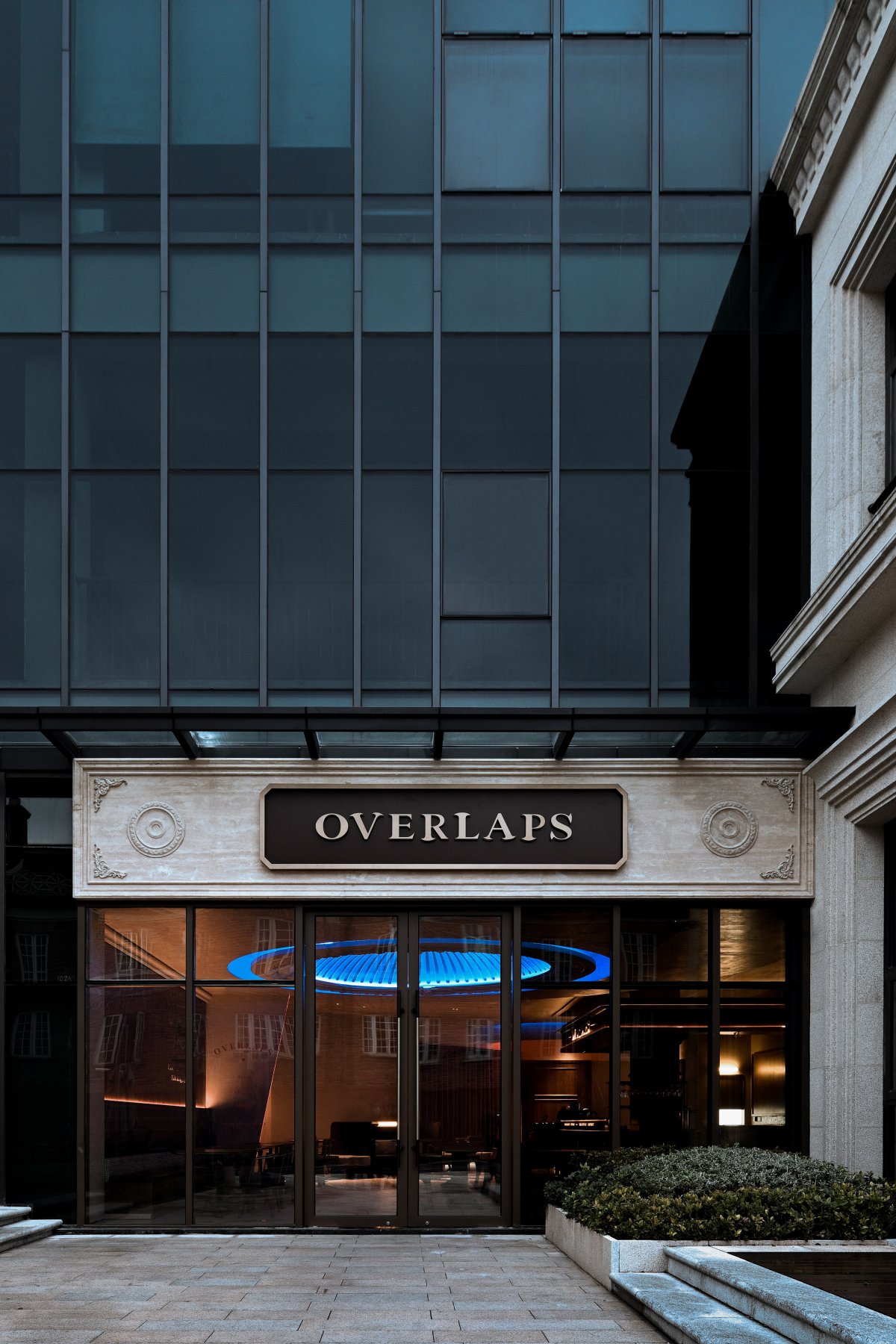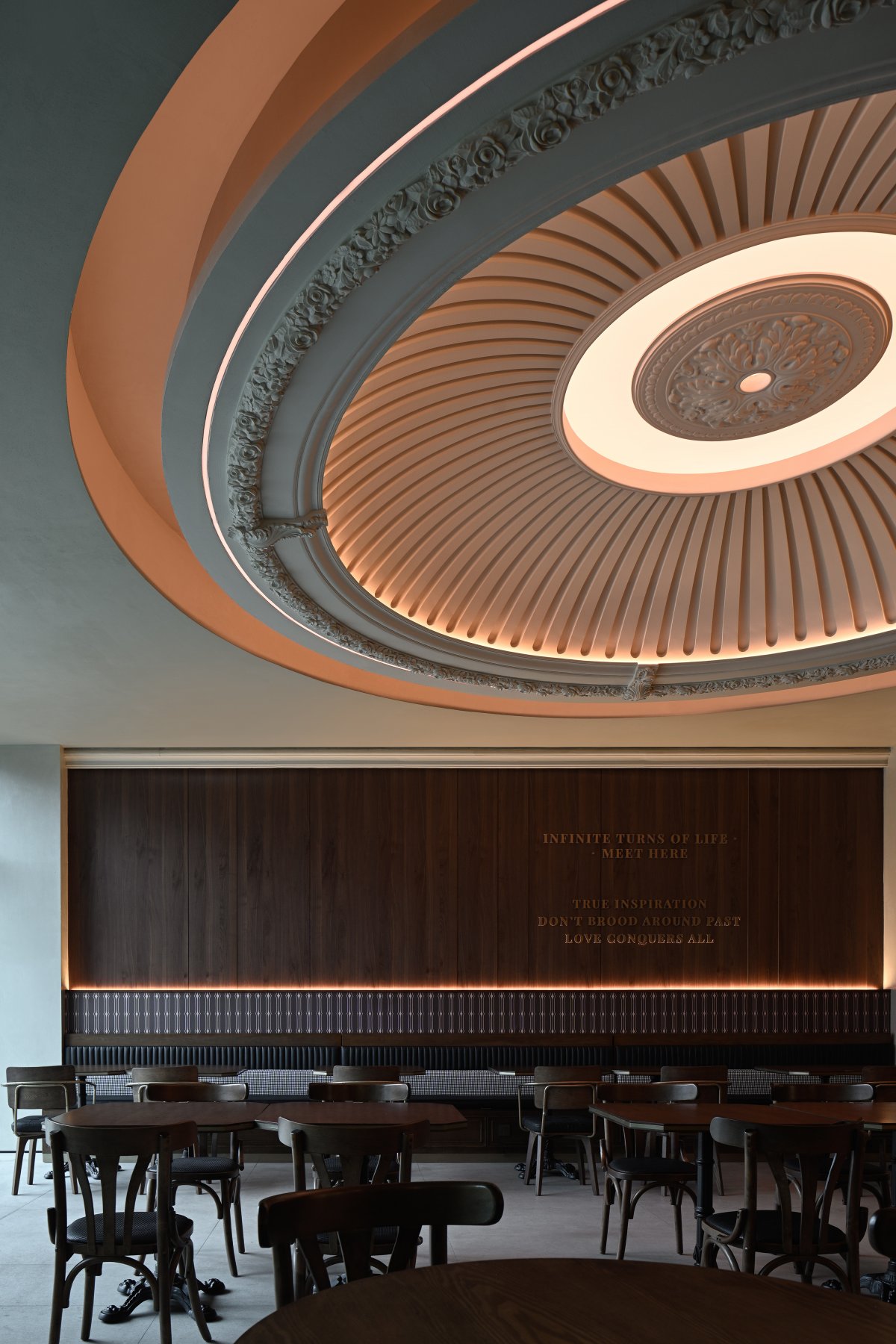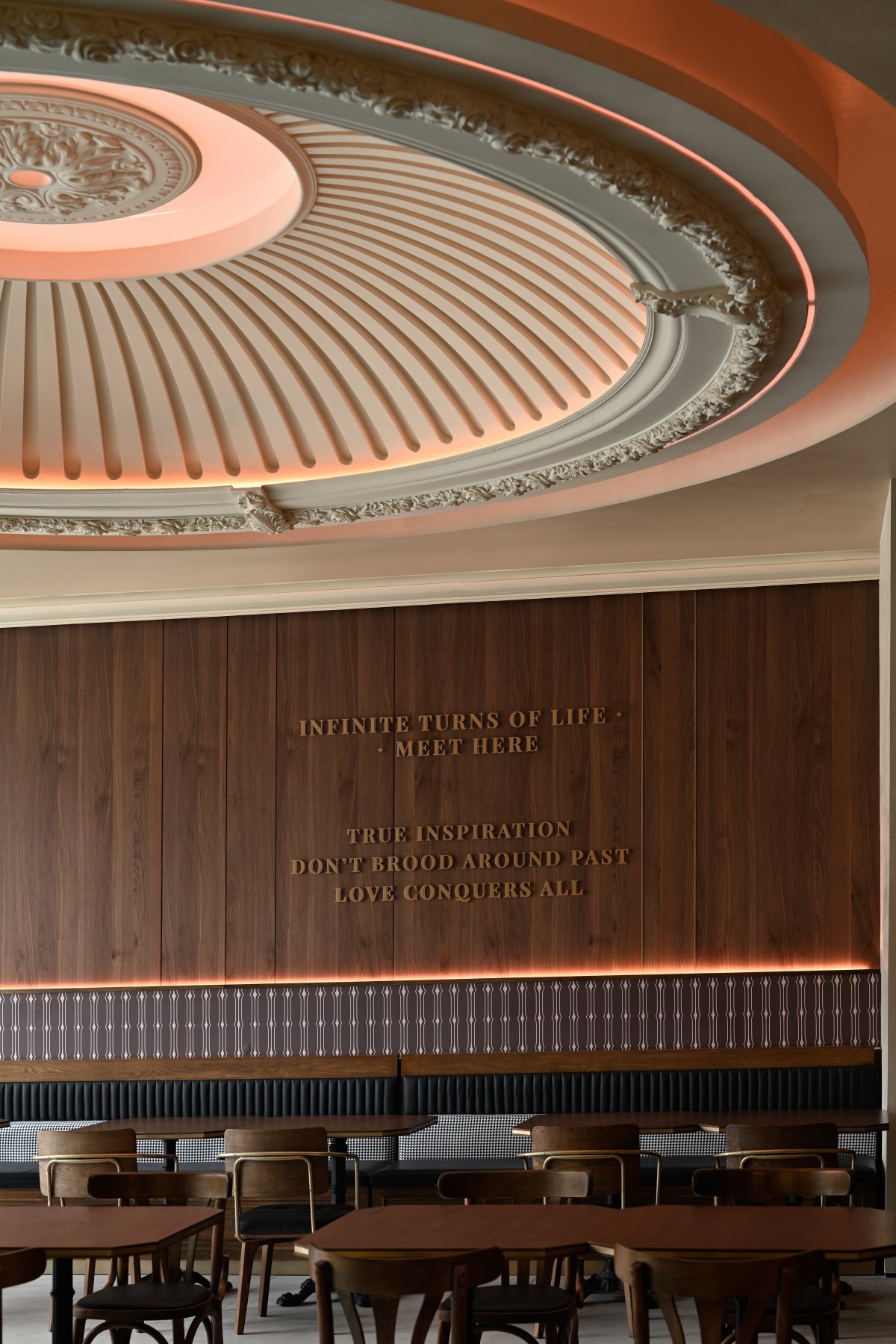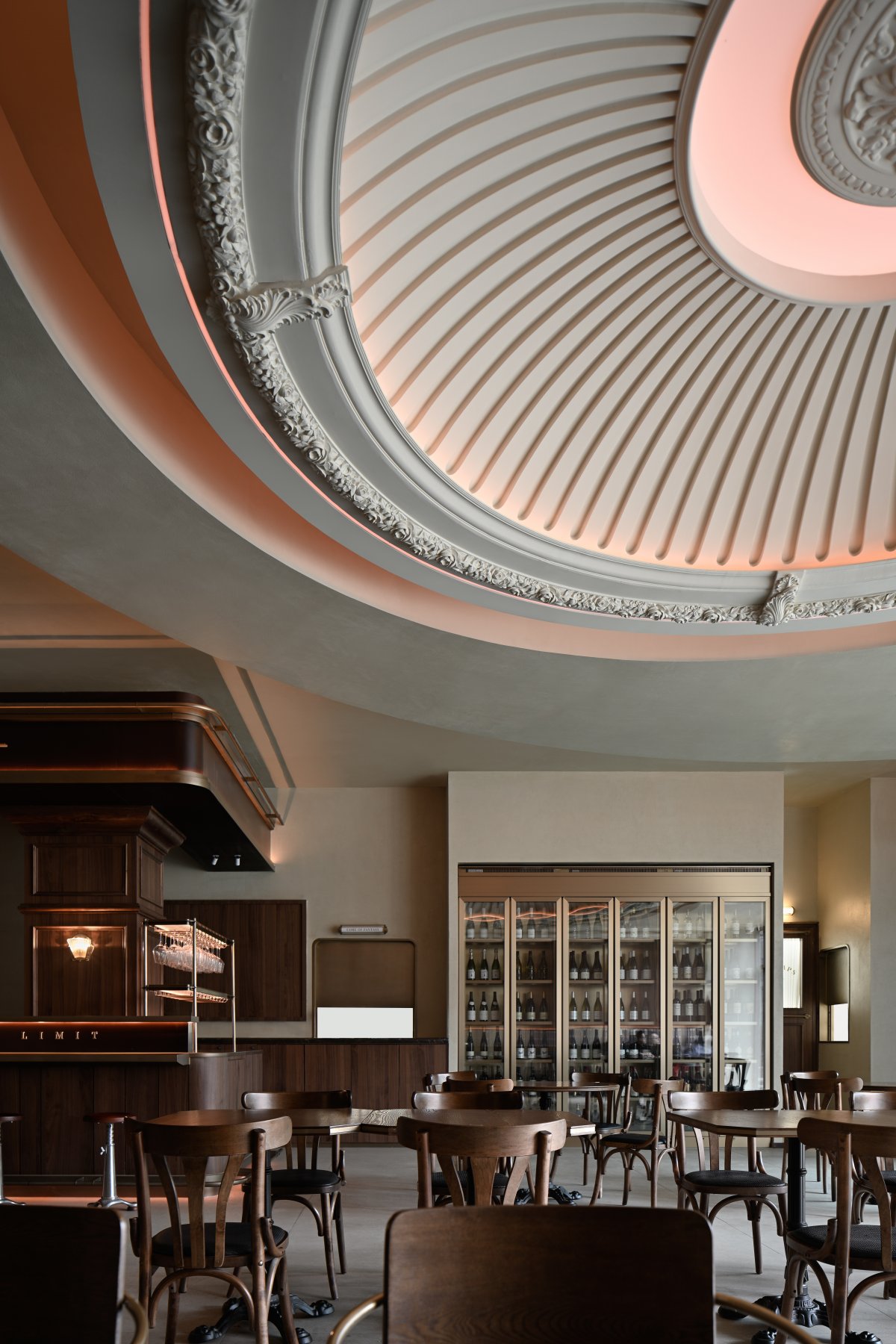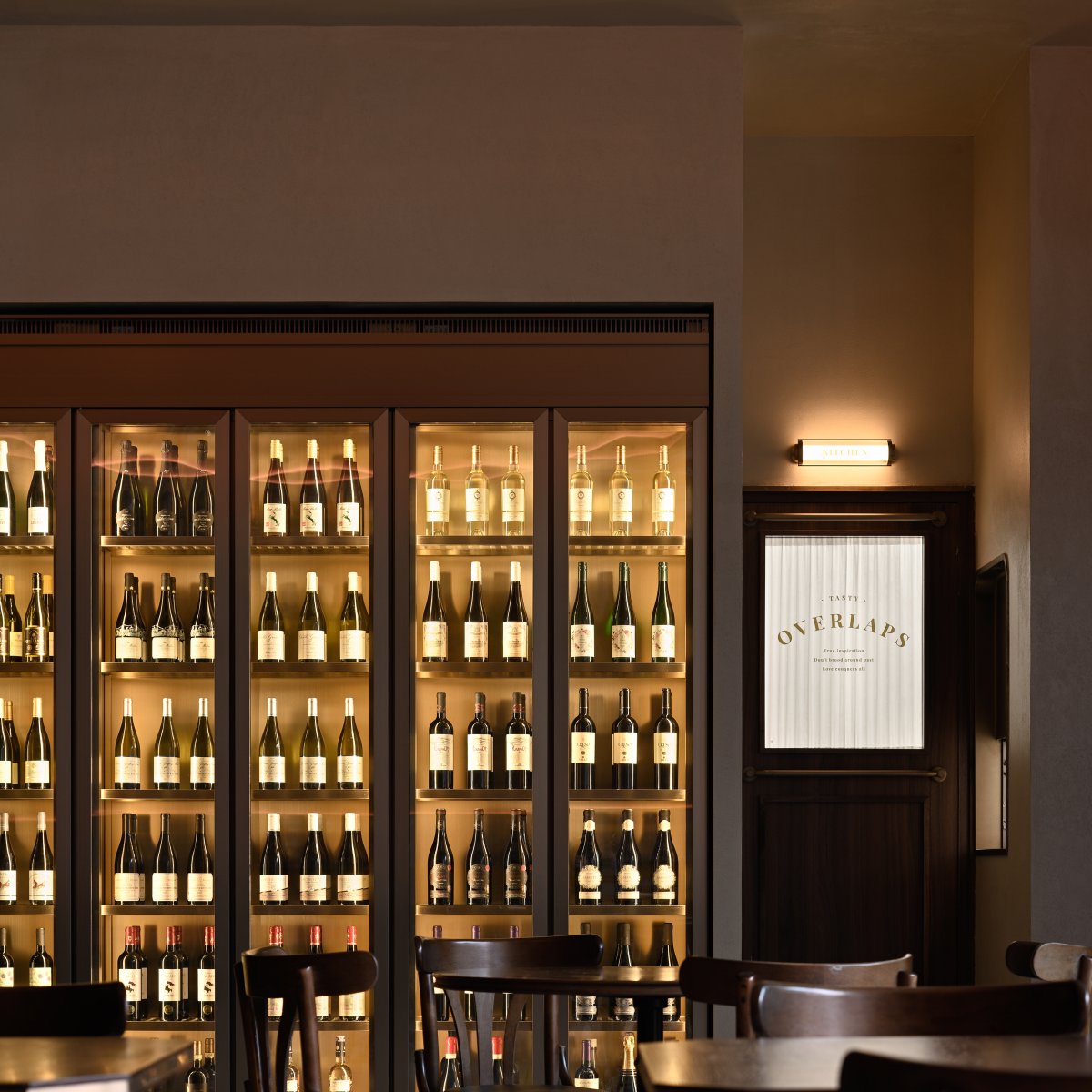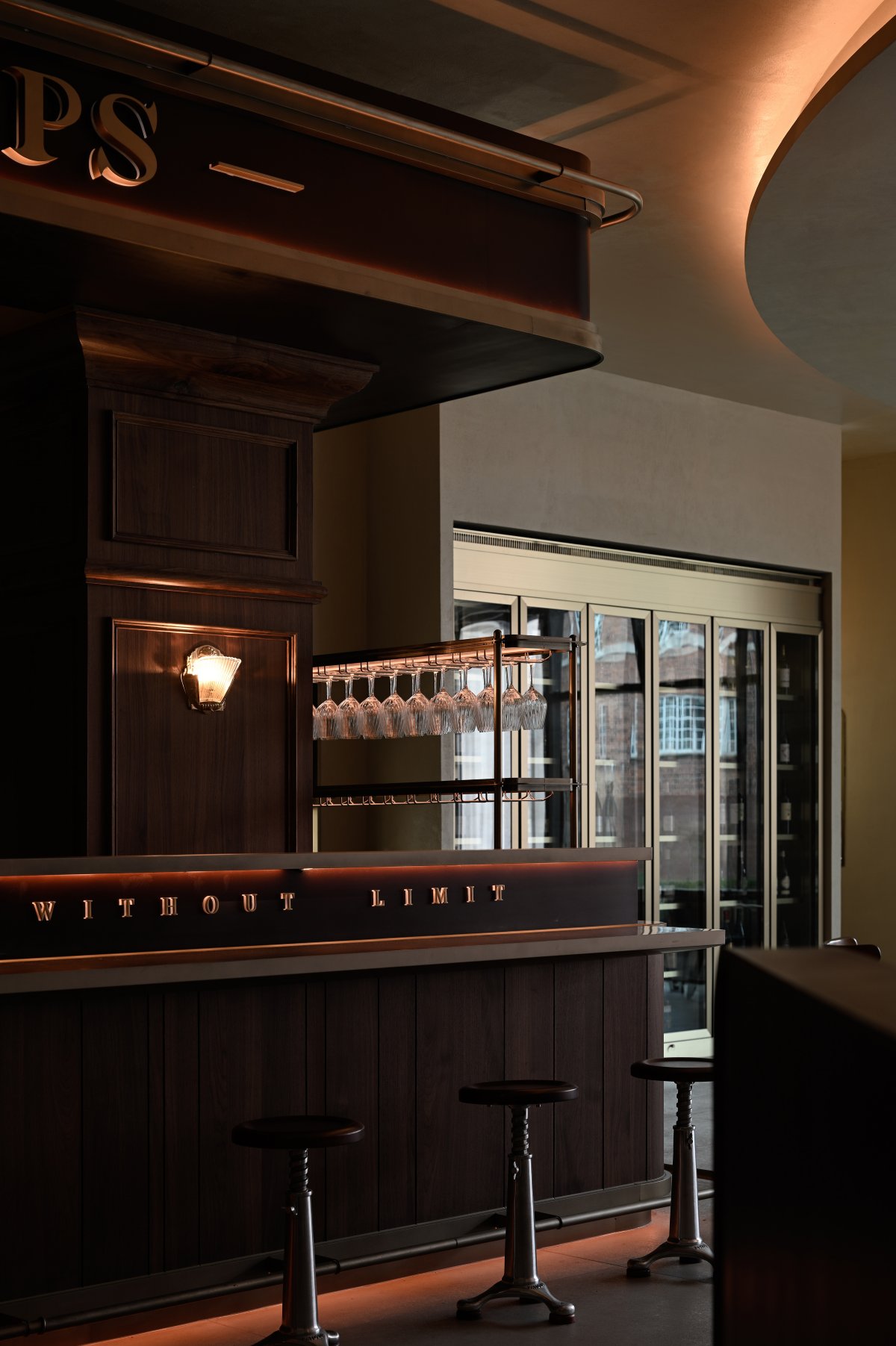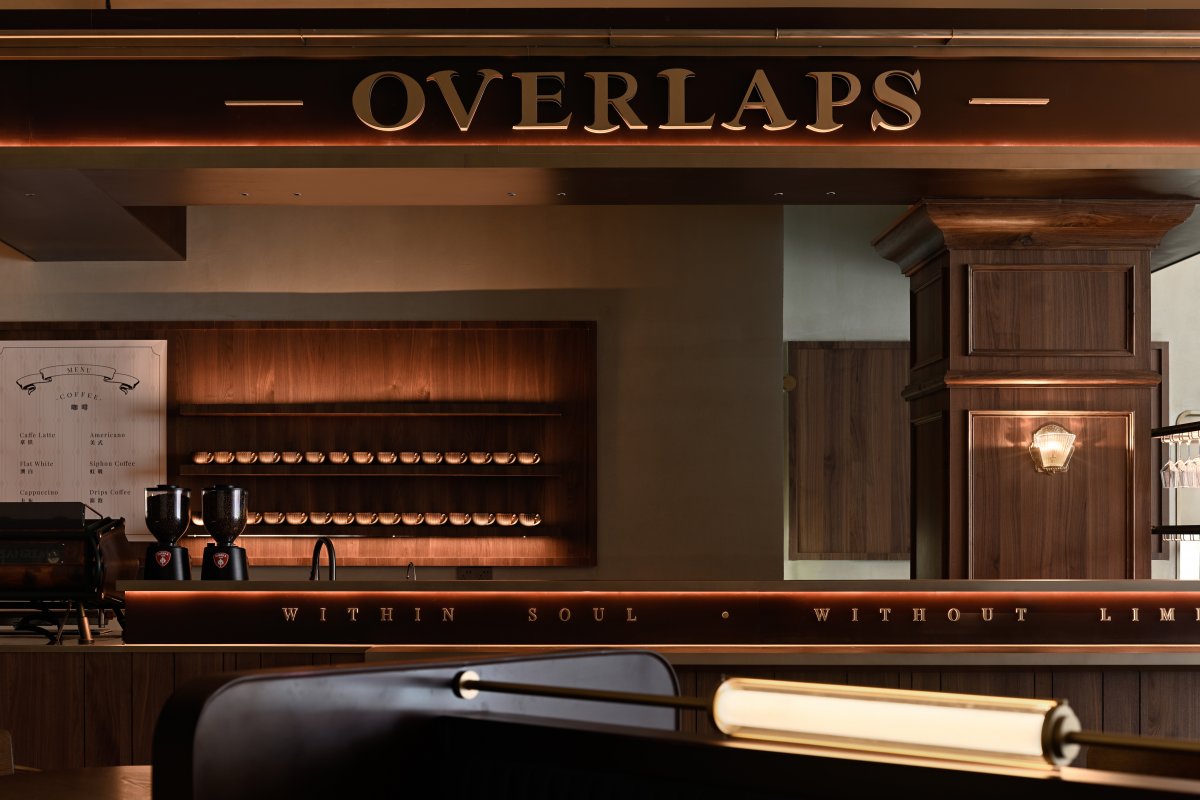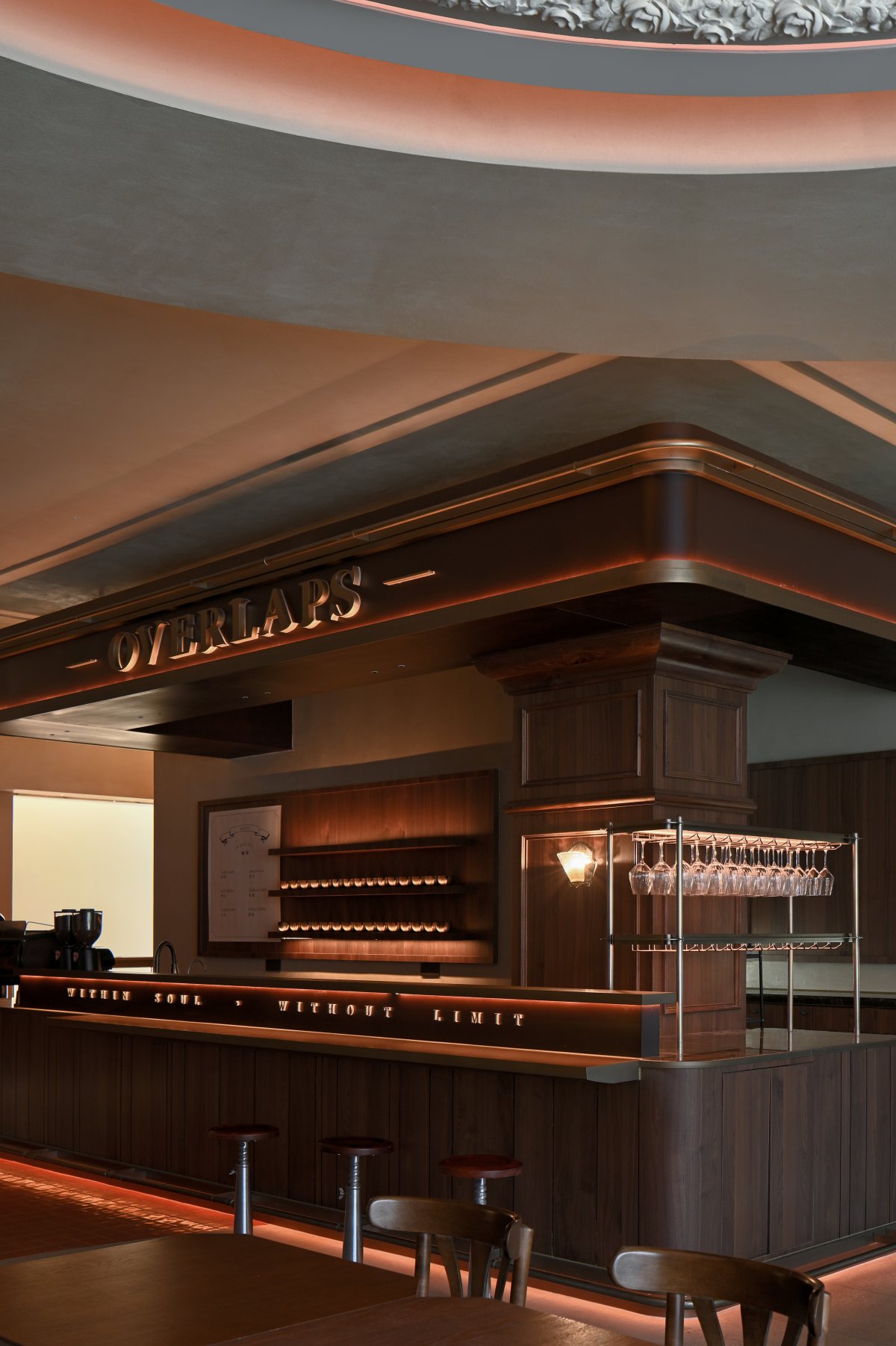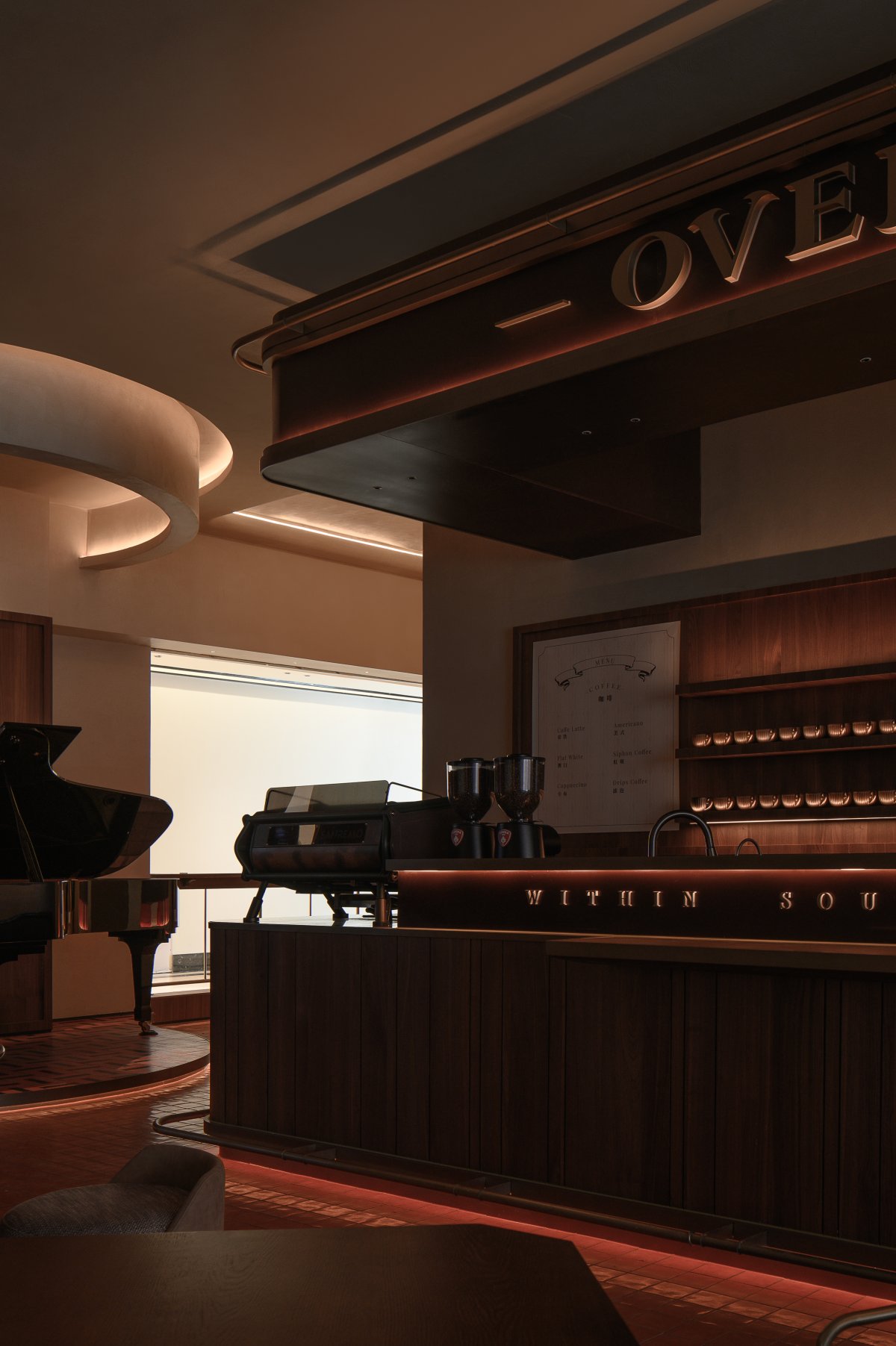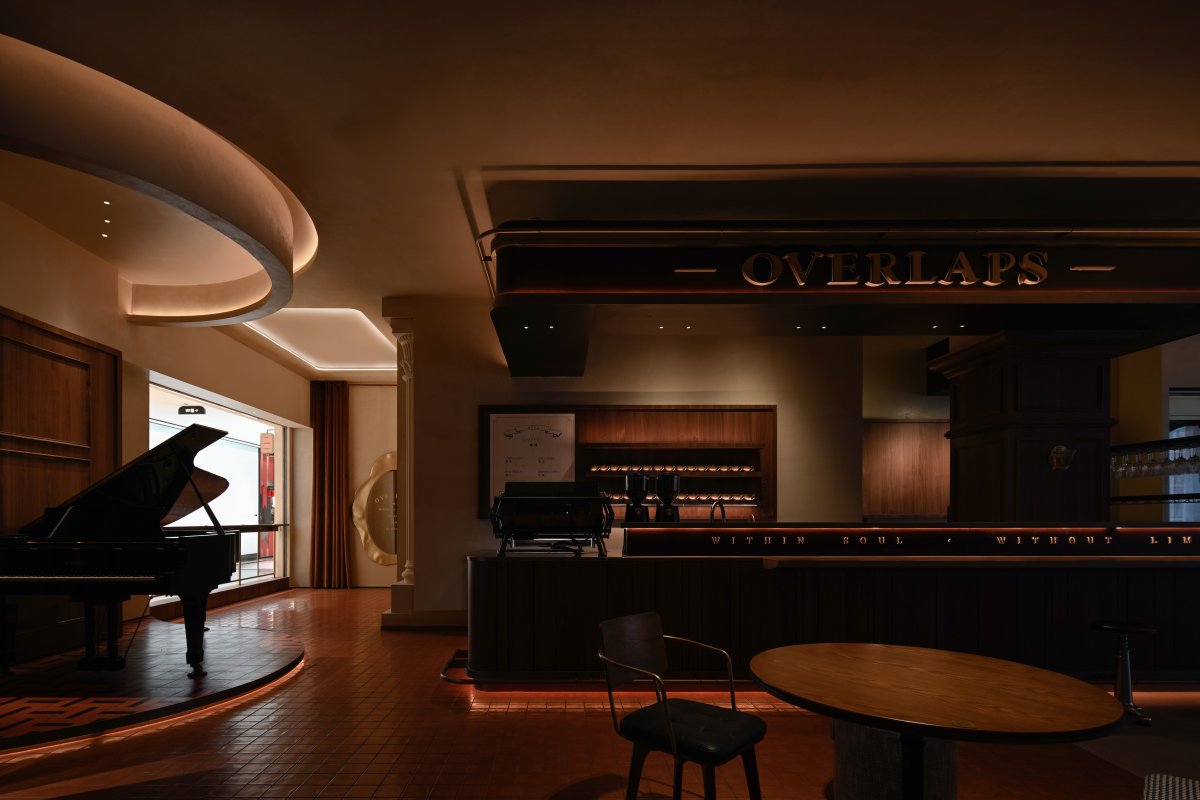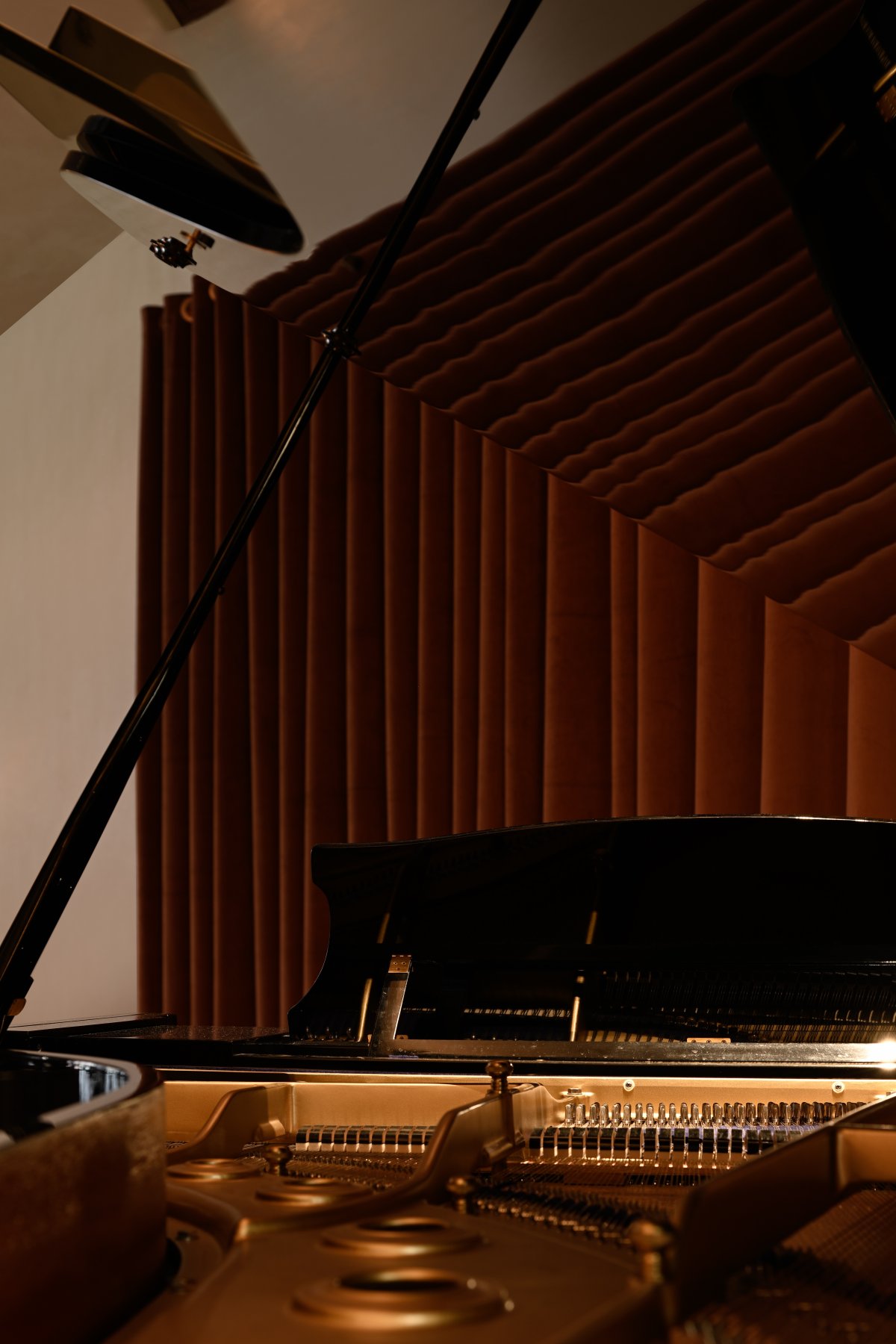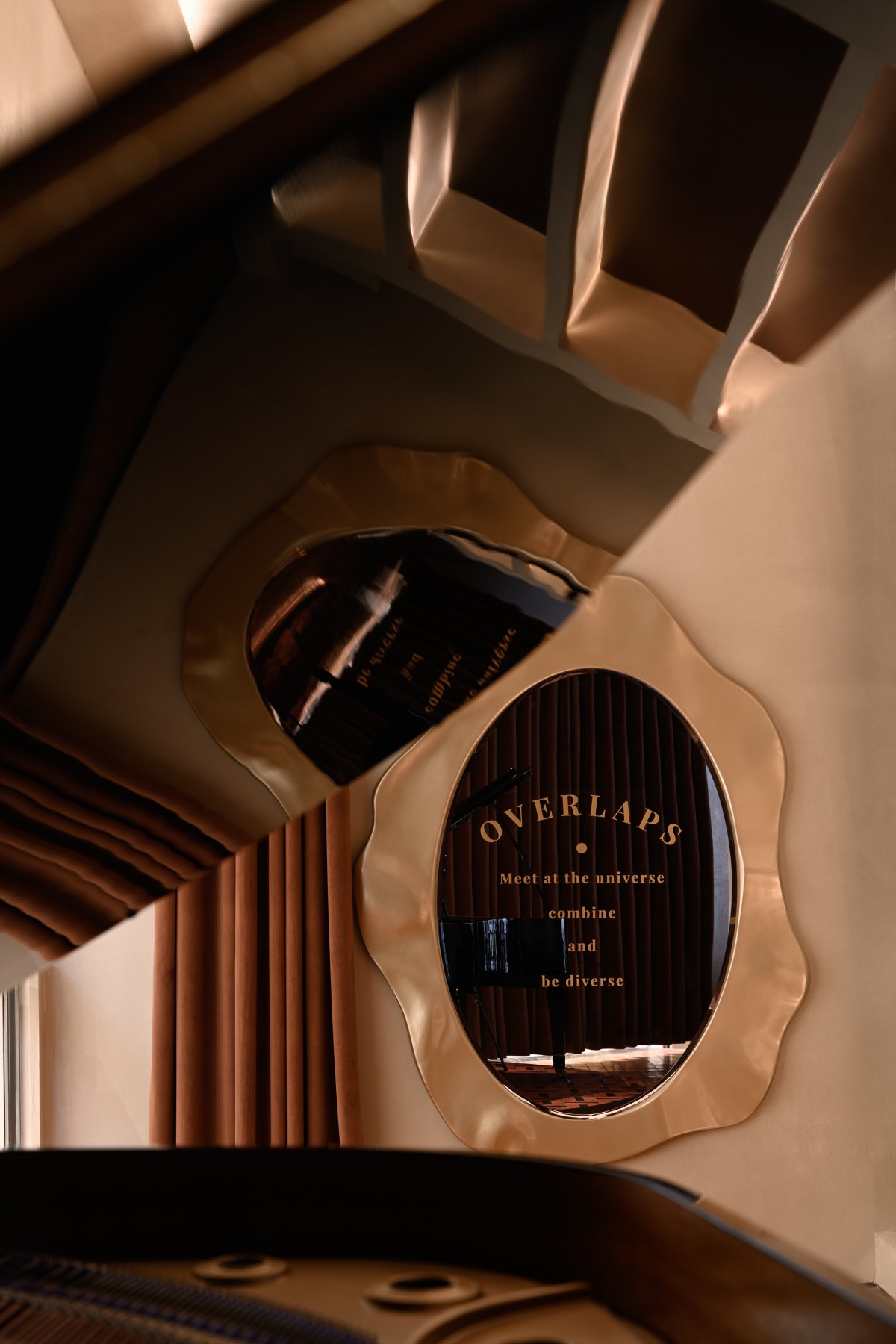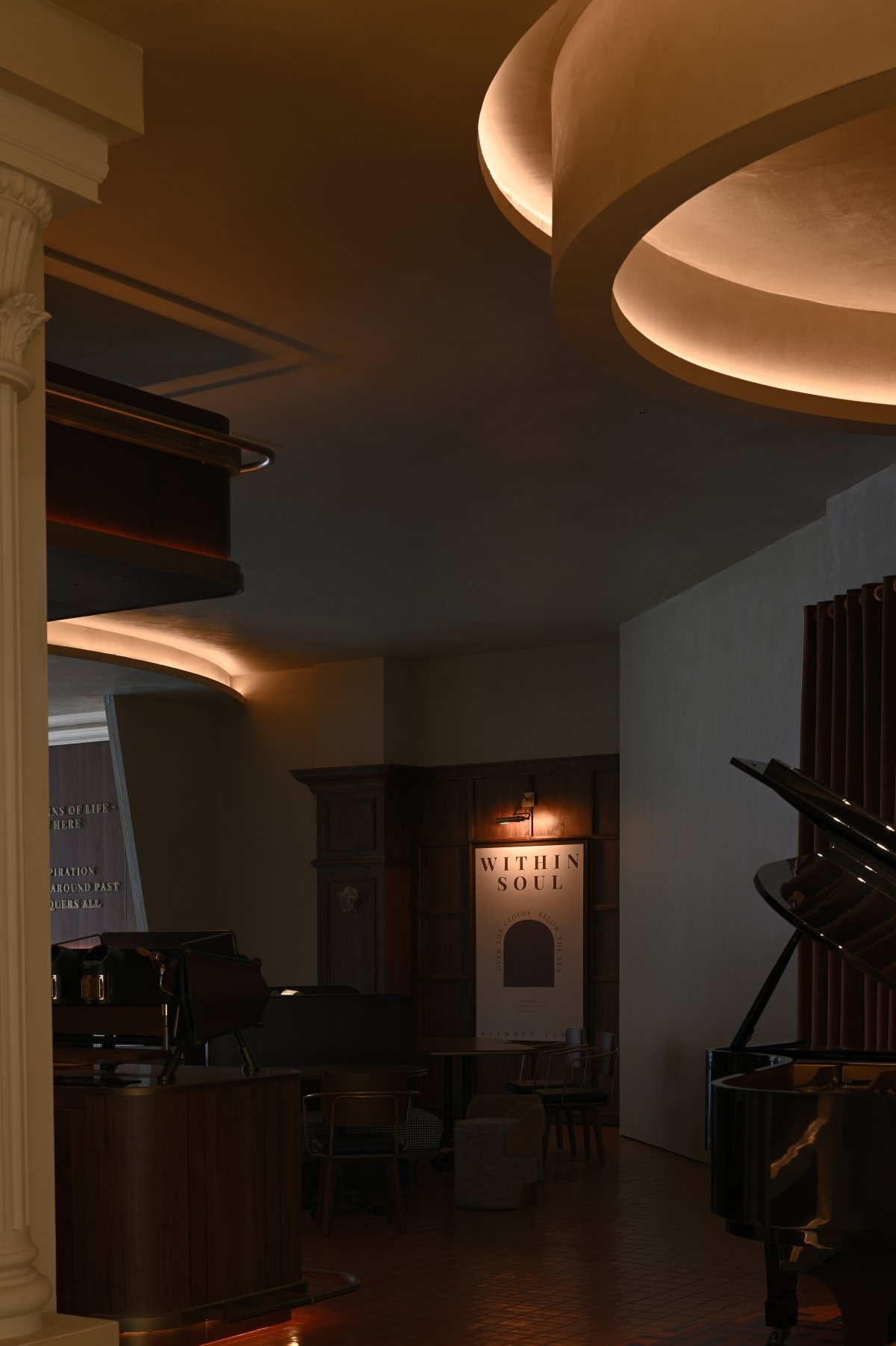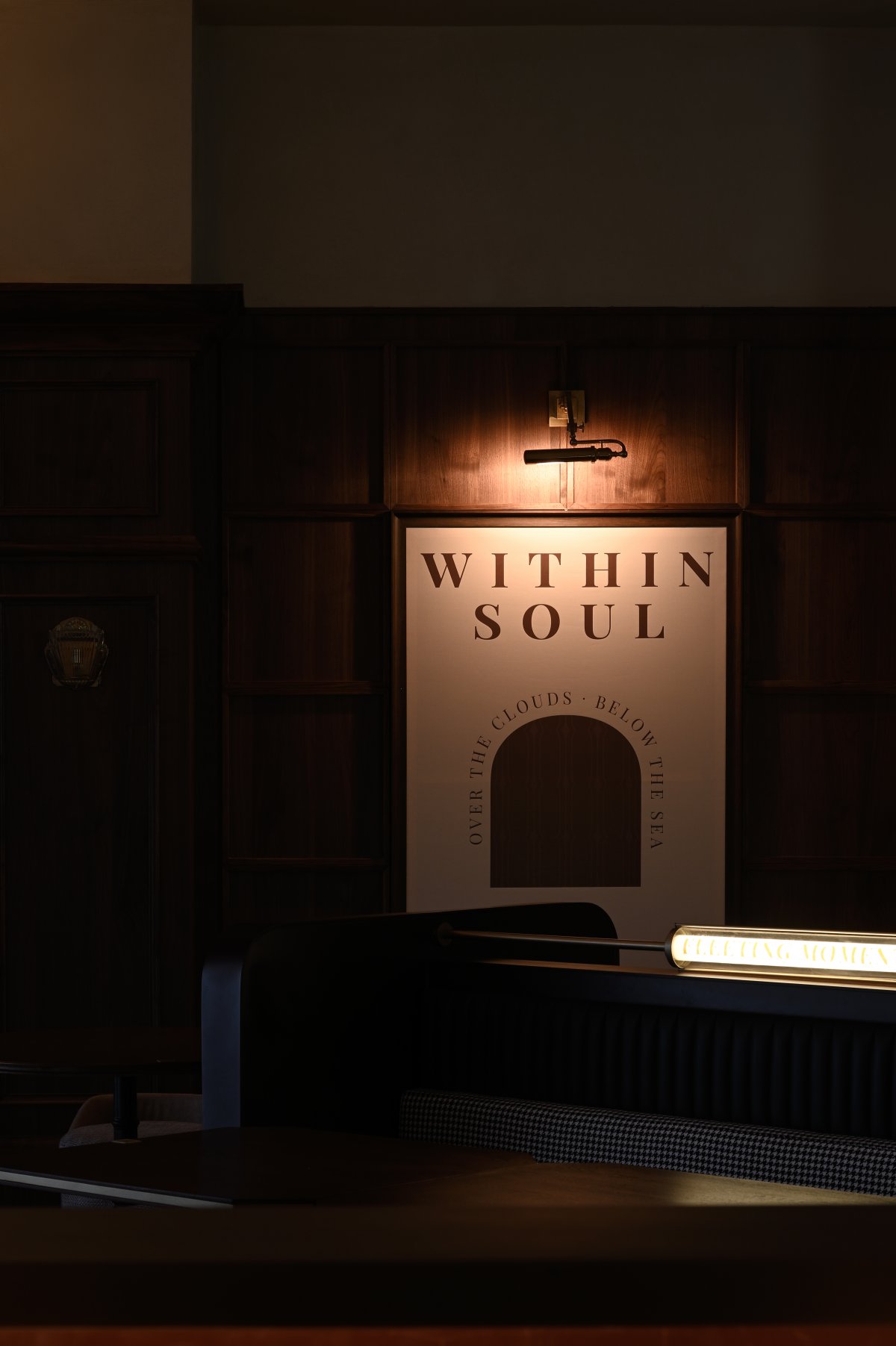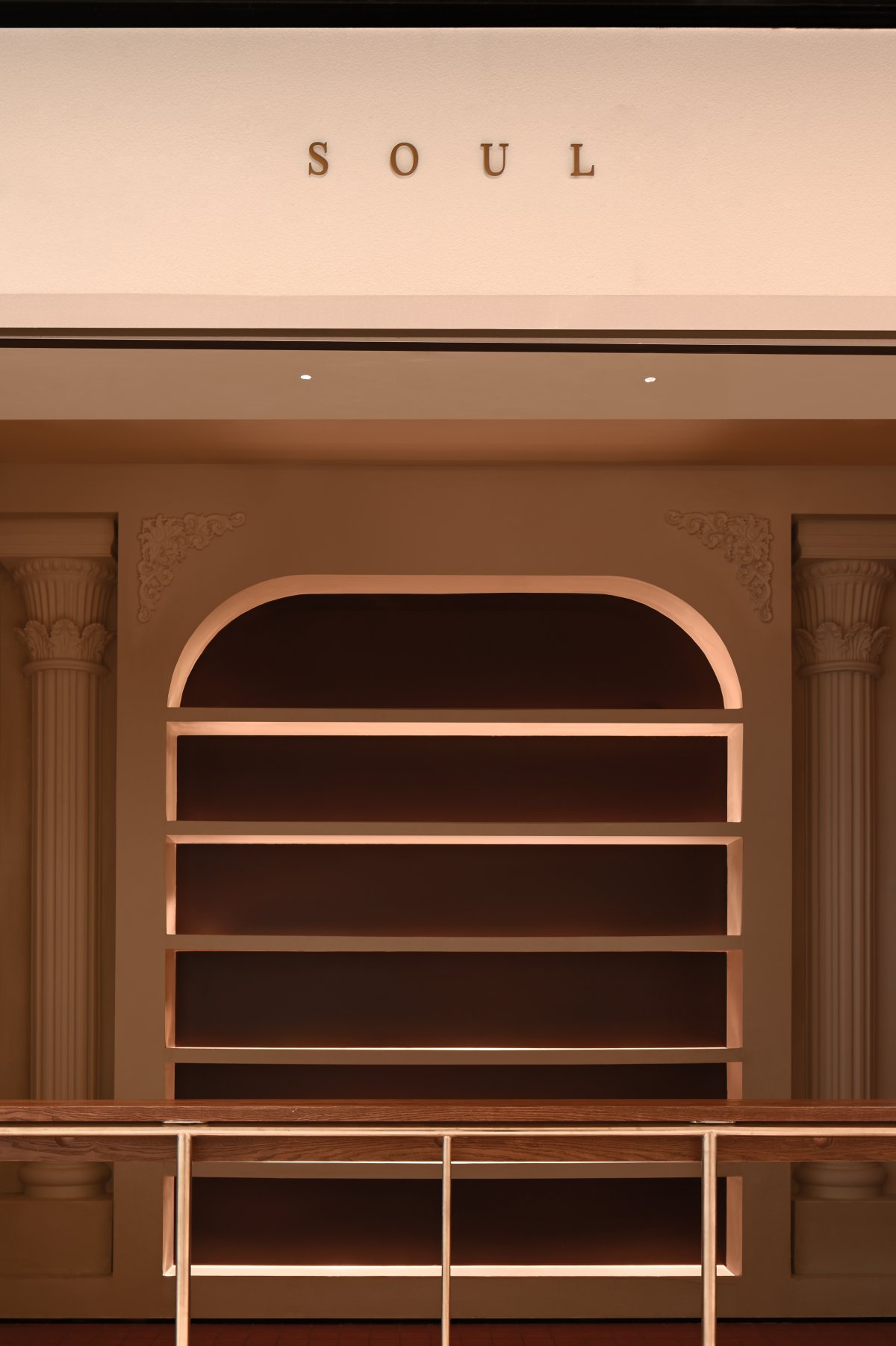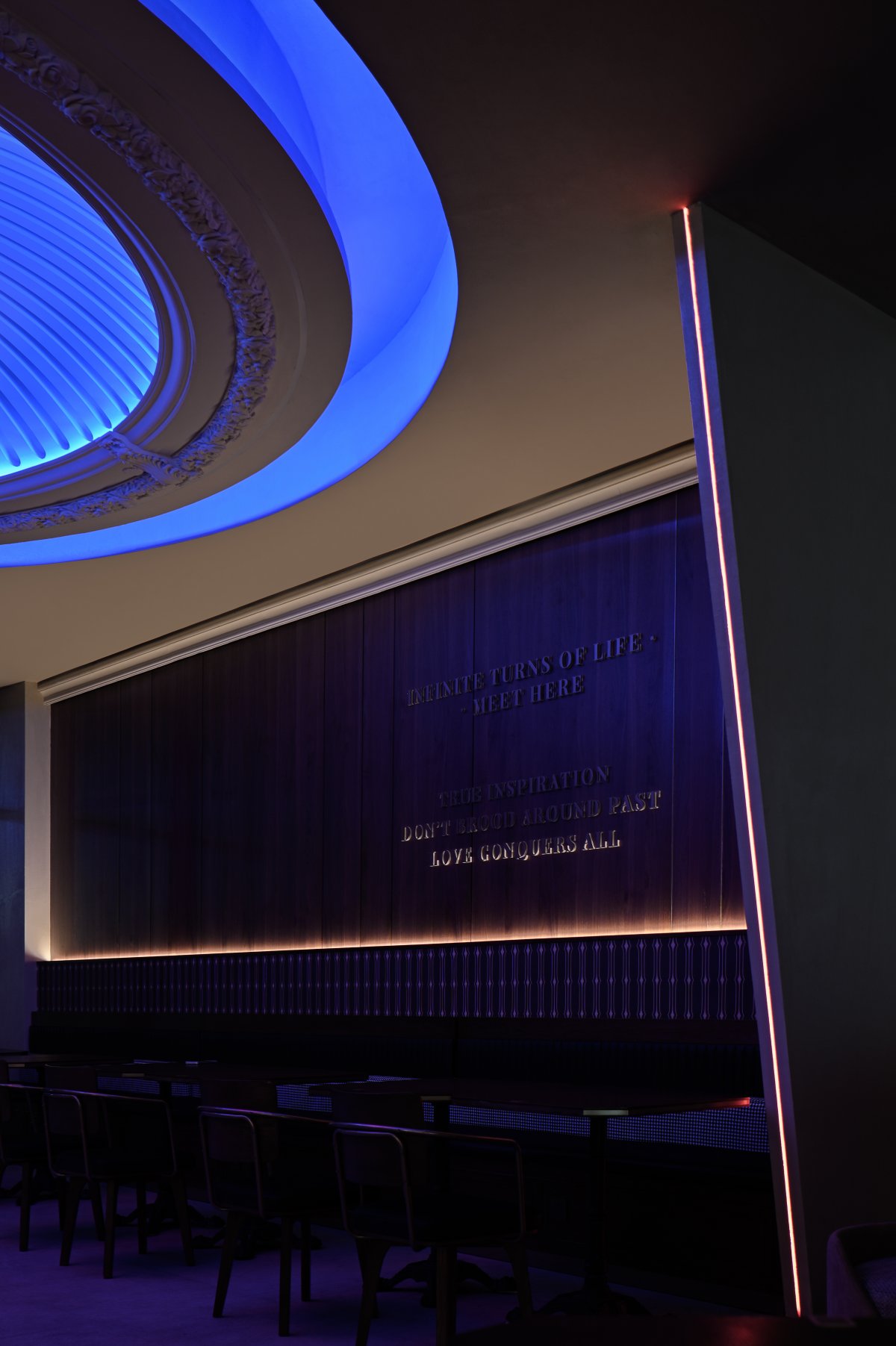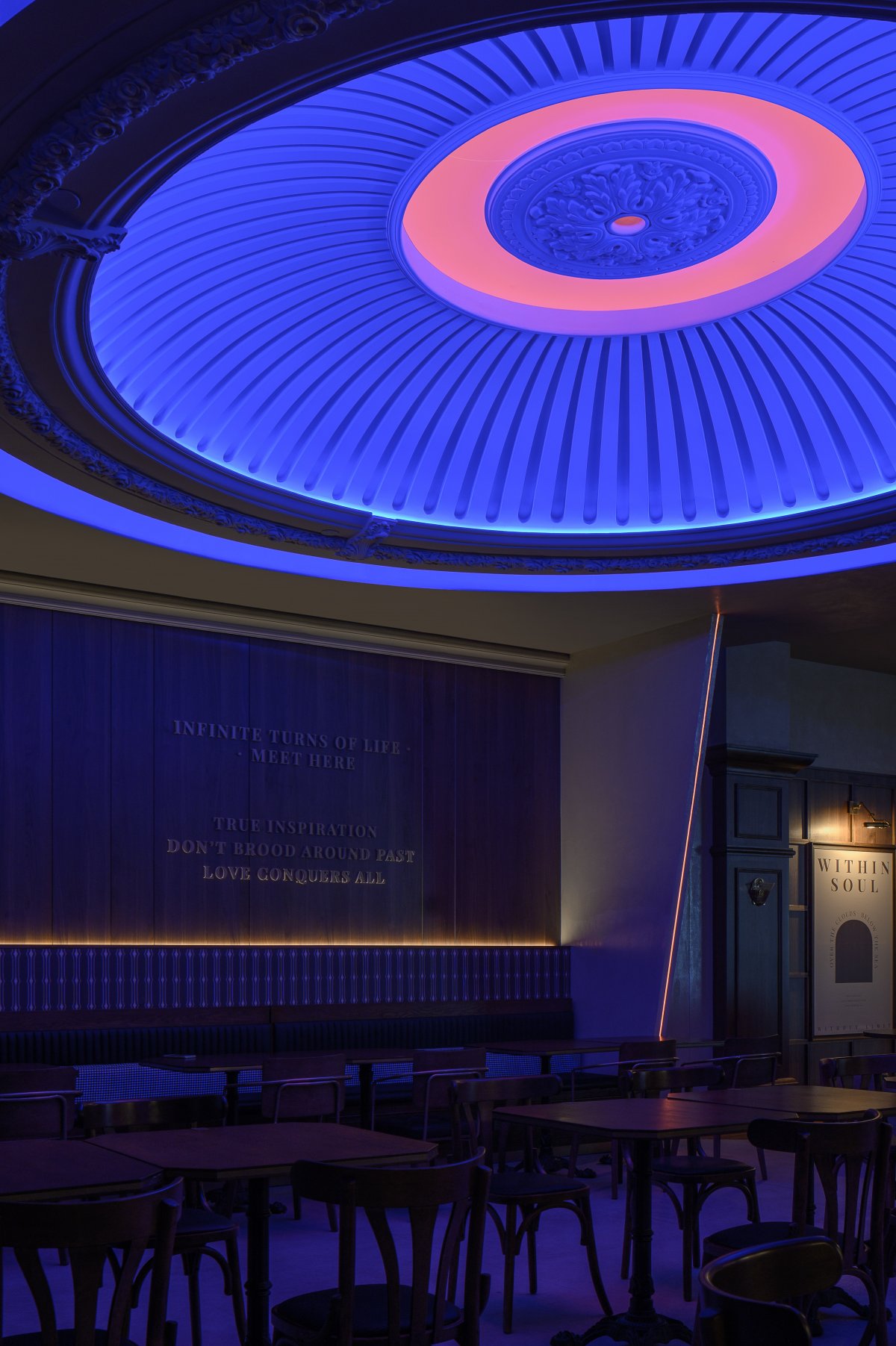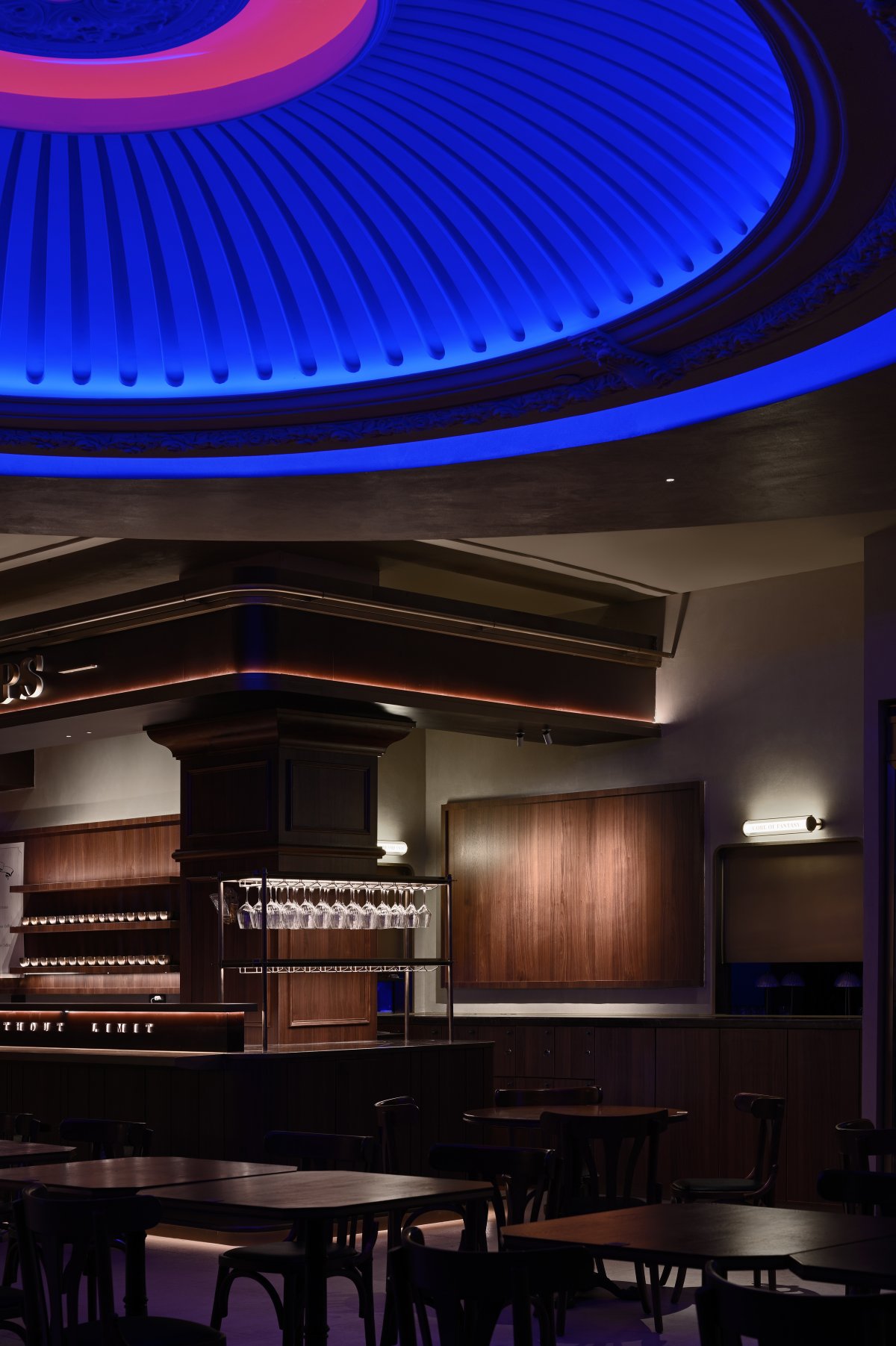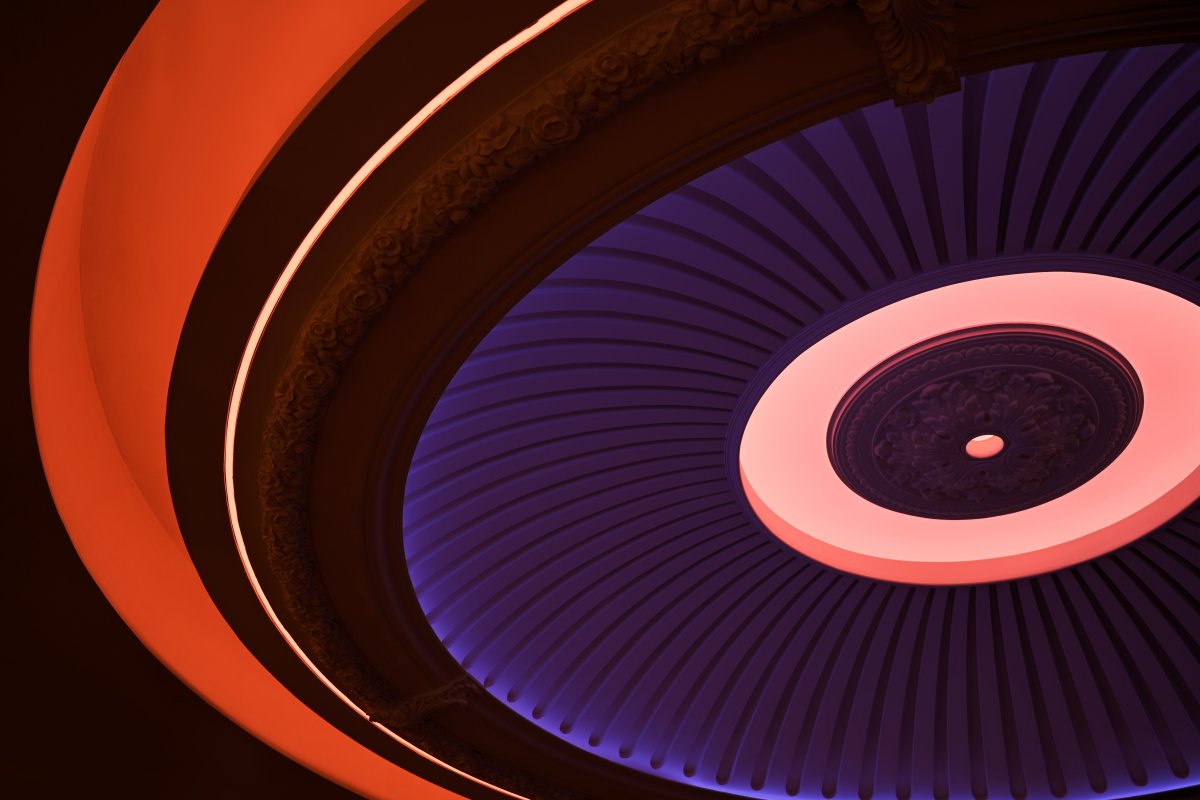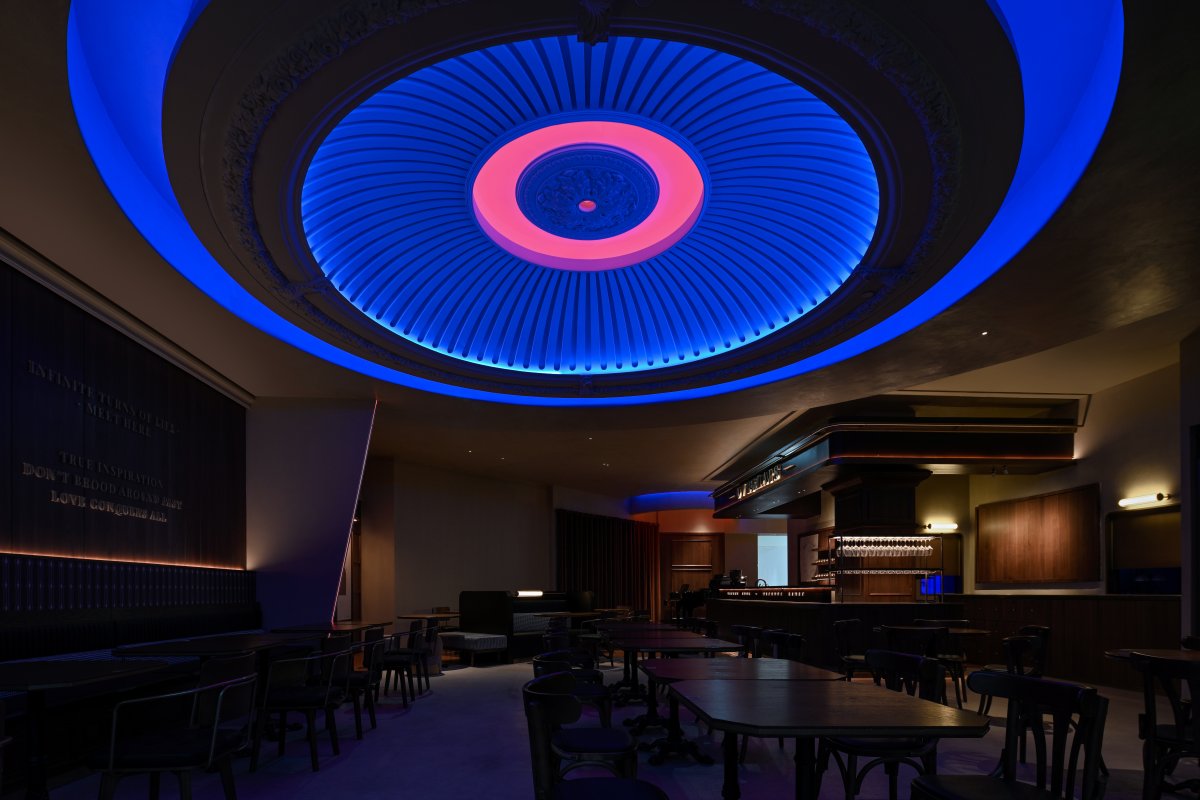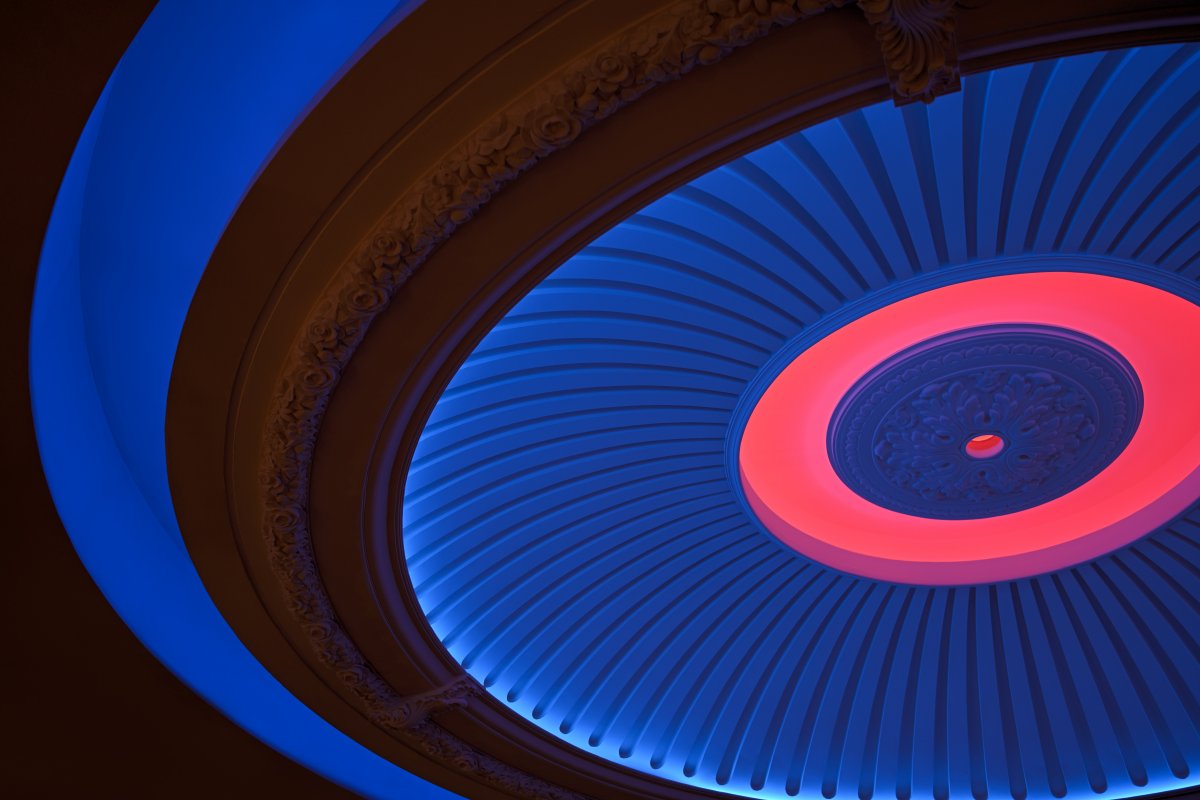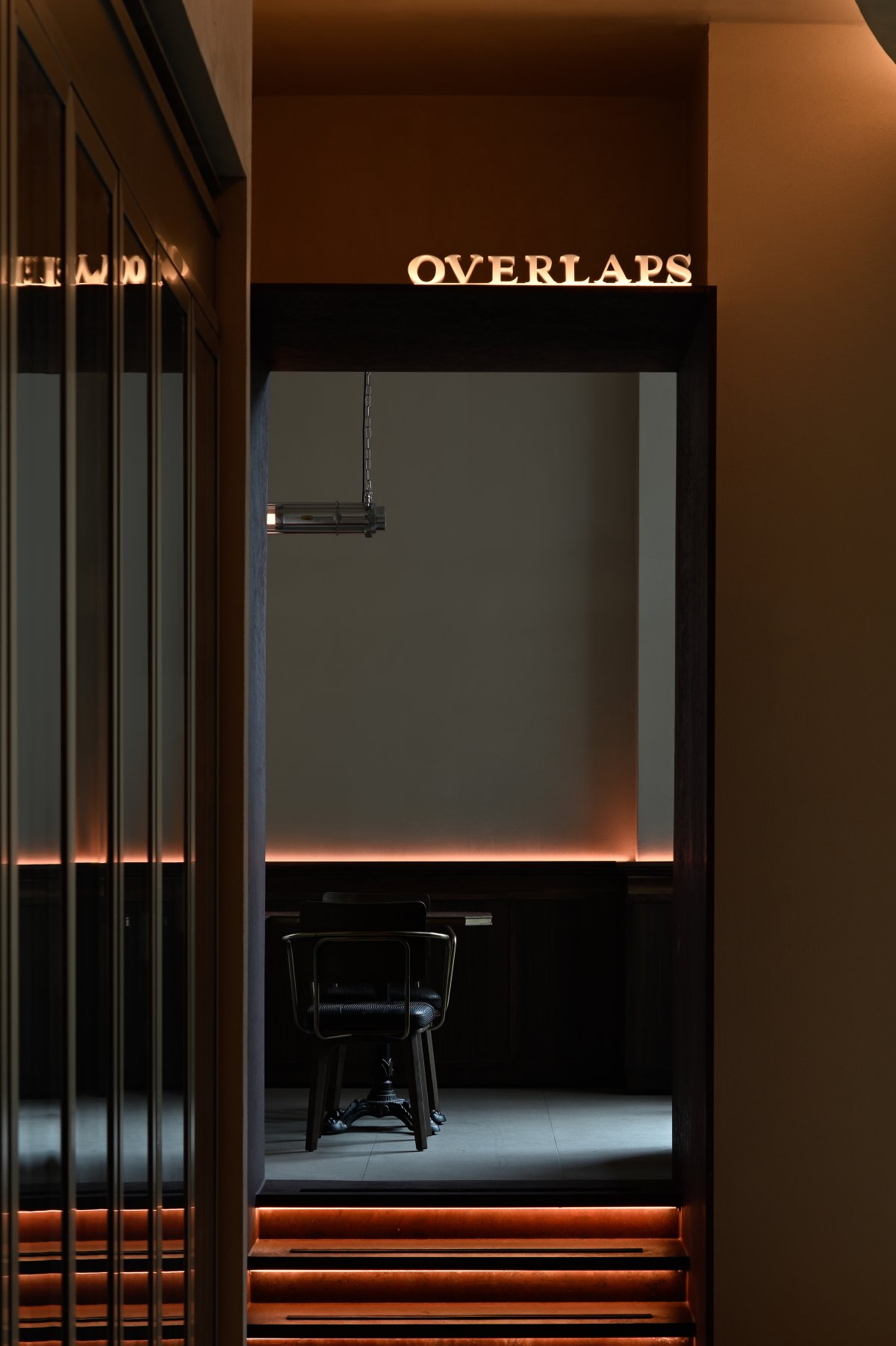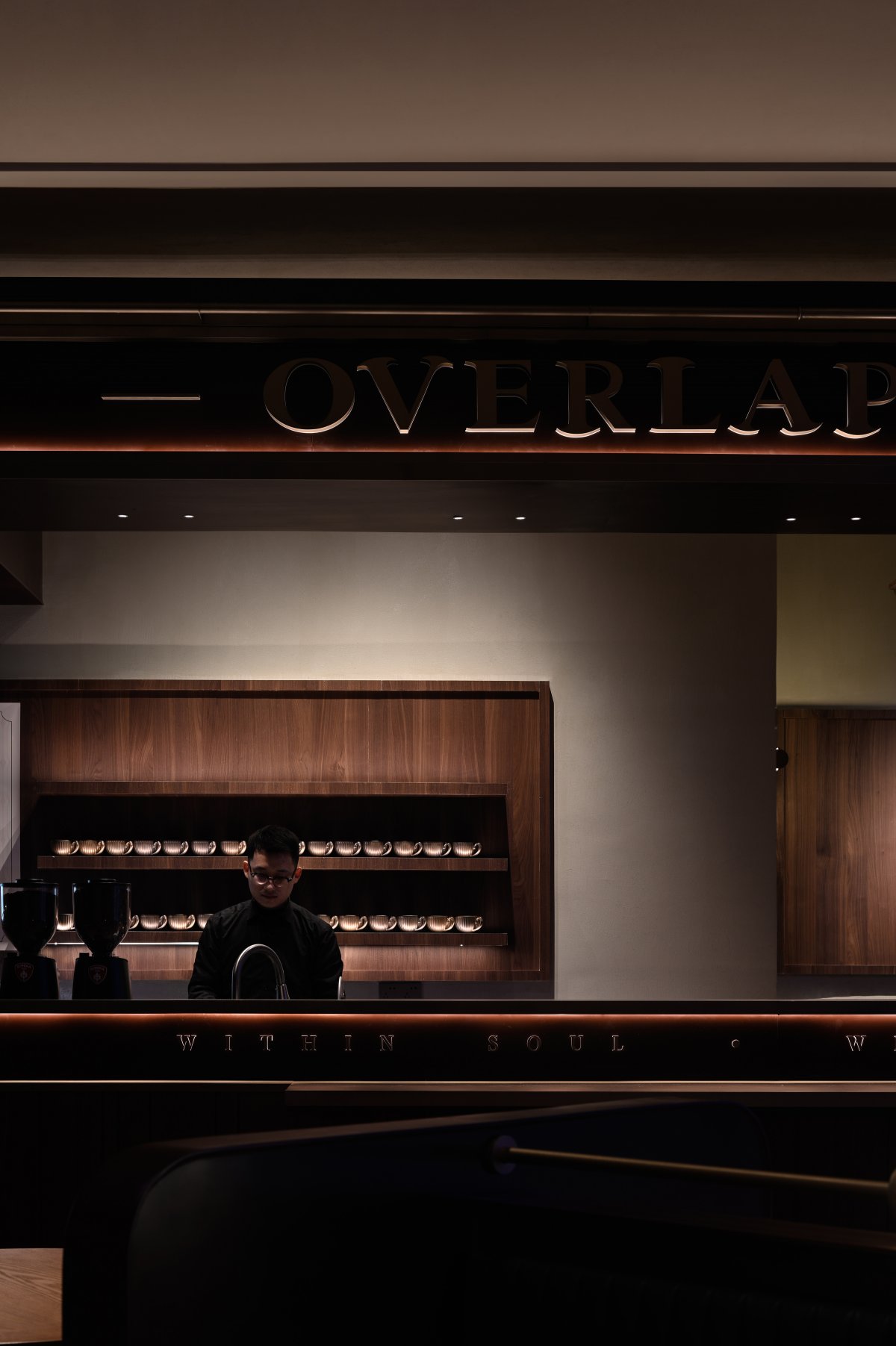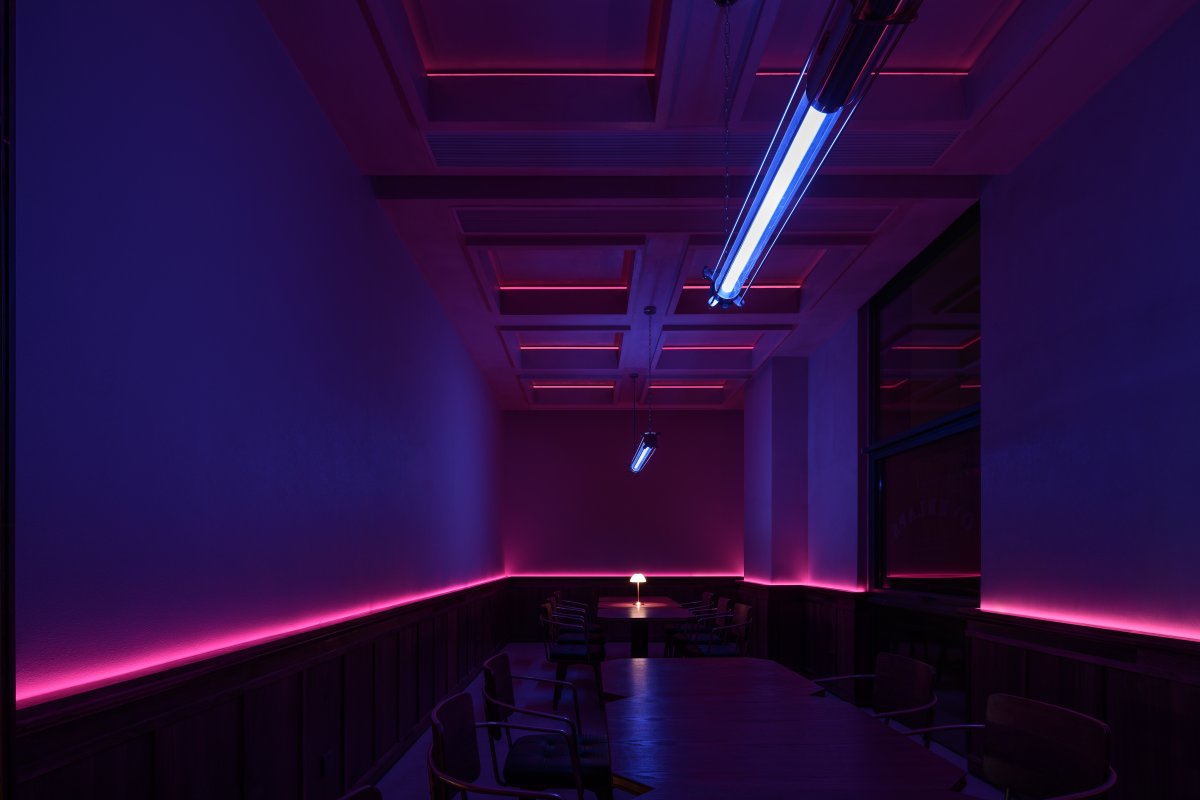
“OVERLAPS,” which literally mean part of one thing covers part of the other, is a technique for disassembling the volume and light hierarchy between objects and reassembling the spatial logic. “The designer’s volume combination is presented consistently under the light, and it is a fitting, magnificent, and learned performance.” “Overlap” is an expansion of the dimension that gives the present space expression a more creative footnote.
OVERLAPS is a high-end restaurant that combines a fine Western foundation with additional culinary inventiveness. On Hengshan Road in Shanghai, the project is close to the Consulate Neighborhood, which used to be a senior living community for the French concession and a hub for Shanghai culture. In Shanghai, where time and creativity collide and space and dreams converge, the designer has captured the fortunate elements of Western culture and blended them with the city’s rich historical heritage.
Overlap does not occur in a staggered manner; it is rather harmonious and not perverse. We can see everything in the lobby from the middle, including the walnut-wood American bar, the wonderfully carved European dome, the antique furniture, lamps, and the traditional plaid patterns. The defining characteristics of several eras of Western classicism seem to converge in one realm.
The designer views harmony’s tipping point as the tone. The warm orange light balances the stark difference between the white marble and the sharp contrast between the walnut. In addition, it lends the room’s delicate beauty a very contemporary touch.
While modernism places an emphasis on geometry and a sense of reality, classicism pays more attention on order and symmetry. Recombining classicism and modernism is required to align history with reality. The grand piano may be heard resonating off the pillars of the arch at the corner of the lobby. Time moves slowly as the steps become deeper and deeper, which is akin to a dialogue across time, bringing the exquisiteness of the European Middle Ages design concept to life in the setting.
Artistic wizardry develops when details are revealed, much like an appreciation of a medieval painting. The designer conceals the sense of history among the retro items, such as the smooth texture of the piano, the mottled artistic paint which is full of the sense of time, and the carefully polished handmade bricks, by echoing the European classical elements of the entire red brick wall and Roman column of the block. The powerful aura of classical craftsmen dispels the harsh impression of life at the nexus of fiction and reality. Time seems to be brewed into a narrative that decorates the area, gently dissolving the remaining scent.
Artistic inventiveness develops when details are revealed, much like an appreciation of a medieval painting. The designer conceals the sense of history among the retro items, such as the smooth texture of the piano, the mottled artistic paint full of the sense of time, and the carefully polished handmade bricks, by echoing the European classical elements of the entire red brick wall and Roman column of the block. The powerful aura of classical craftsmen dispels the harsh impression of life at the nexus of fiction and reality. Time is brewed into a narrative that decorates the area, gently dissolving the remaining scent.
“Overlap” refers to the creation, integration, and independence of several scenarios as well as the flexible addition and subtraction of pieces. A unique spatial logic and narrative style at the intersection and parallelism, as well as an artistic approach to bridging the fragmented space scenes, are created by the design of OVERLAPS Restaurant, which blends various dimensions, such as American and European, modern and classical, restaurant and bar. This helps time to flow at rest and allows dreams to become true.
- Interiors: MET Creative Brand / Zhengyao Luan
- Photos: Xu Yiwen

